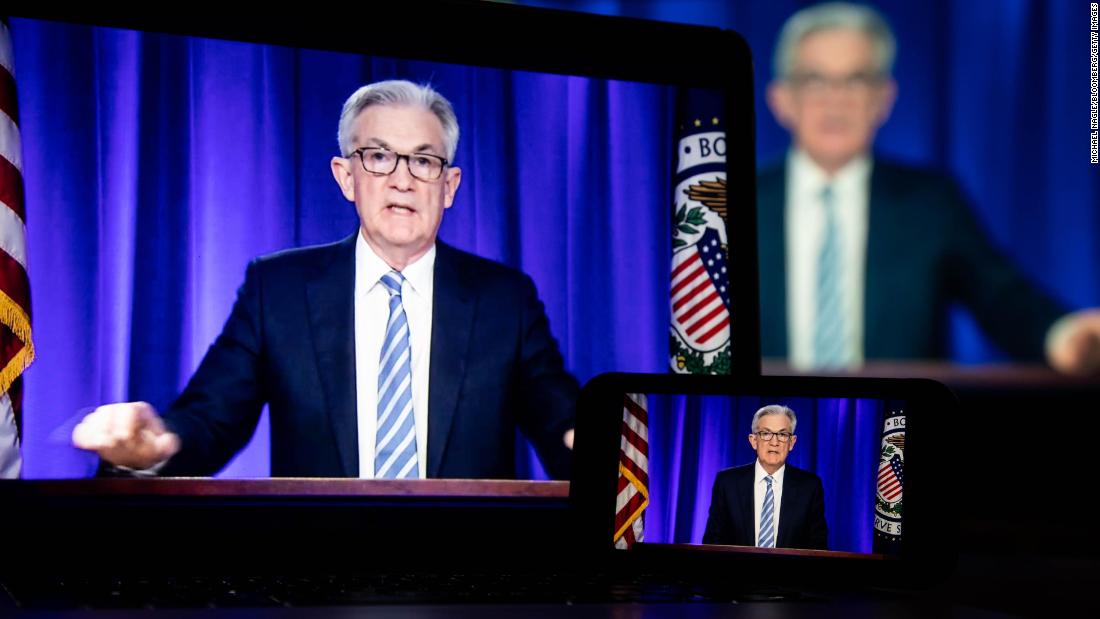The Fed decides to raise interest rates by half a percentage point 5:28
(CNN Business) --
Wide-brimmed jeans, butterfly hair clips and half-point hikes in interest rates: The 1990s are back.
Earlier this month, Federal Reserve (Fed) Chairman Jerome Powell announced a half percentage point hike in interest rates, the biggest hike in more than two decades.
Powell also indicated that he would not hesitate to do so again, a move straight out of the central bank's playbook of 1994, when the Fed last tempered the US economy and successfully executed a so-called soft landing.
The Federal Reserve raises interest rates half a percentage point, in a historic decision
In the 12 months after February 1994, the Federal Reserve, under former Chairman Alan Greenspan, almost doubled interest rates to 6% in just seven hikes, including two half-point hikes and one three-quarter hike.
"Take that, 1994," Morgan Stanley analysts wrote in a note following Powell's comments.
Inflation rates in the United States are near 40-year highs, and most economists agree that the Fed needs to raise interest rates to reduce economic demand and maintain price stability.
They just don't agree on what that will mean for the economy as a whole.
advertising
US Federal Reserve raises interest rates 1:03
The history of central bank rate hikes seems to support the inevitability of an economic downturn, but there have been rare occasions when the Fed has made a soft landing: once in 1965, and again in 1984 and 1994.
The Federal Reserve seeks to cool the economy without a recession
In the coming months, the Federal Reserve will try to achieve a cooling of the economy that causes prices to fall, but does not lead to a recession.
This is a very difficult task that some, like the former president of the Federal Reserve Bank of New York Bill Dudley, believe will be almost impossible to execute.
Larry Summers, a prominent critic of Powell's Fed, has pegged the probability that the central bank's actions will lead to a hard landing at 100%.
Analysts at Goldman Sachs say it's closer to a one in three chance.
But Powell remains convinced that 1994 has more to offer us than rewatching The Lion King or listening to Ace of Base.
"I think the historical record offers some cause for optimism: Soft landings, or at least slightly softer ones, have been relatively common," Powell said in a speech in March.
But there are some big differences between 1994 and 2022, and the timing may be the biggest factor.
Has the US Federal Reserve acted correctly?
2:13
Greenspan proactively raised rates.
He saw that the economy was booming and wanted to get ahead of the inevitable inflation.
Powell has been more reactive.
He raised rates by half a percentage point only after inflation spiked to levels not seen in decades.
There is a possibility that the Fed is too far behind to be able to ease inflation without inflicting economic hardship on Americans.
The current job is also not what it was then.
In 1994, the baby boomer generation (born after World War II) was at the peak of their careers, lots of new technology was being introduced into the workplace, and immigration numbers were strong.
All of this led to a huge labor force and productivity rates that kept unemployment low even as interest rates rose.
In 2022, we face baby boomers poised to exit the workforce, a significant pandemic-reduced labor participation rate, and slowing productivity.
"In the past, when you've pushed the unemployment rate up, you've almost never been able to avoid a full-blown recession," Dudley said.
"The problem the Fed faces is that it's late."
A decision shaken by world events
Geopolitical luck was also a factor in the soft landing in 1994, and despite the best efforts of economists, luck cannot easily be repeated.
Has the Federal Reserve acted correctly?
1:15
The North American Free Trade Agreement (NAFTA) was approved in 1994 and the Berlin Wall had fallen just five years earlier.
Both events increased the availability of imports and reduced the cost of goods.
Today, globalization is in retreat, as the pandemic and the war in Ukraine have led to major energy price shocks and supply chain disruptions.
"If you look closely, Greenspan's Fed benefited from considerable luck, which the current Fed probably won't," Carl Tannenbaum, chief economist at Northern Trust, wrote in a research note.
"None of this suggests that a soft landing is impossible this time. But the degree of difficulty is much greater than it was 28 years ago."
There may still be room for a soft landing, as long as you're willing to tweak the definition a bit.
We've seen 11 cases of Fed policy tightening since 1965 (not including current moves), Princeton economist Alan Binder said.
Seven of them resulted in a drop in economic output of less than 1%, a relatively small decline.
"So soft landings can't be that hard to achieve," he concluded.
After all, a more or less soft landing may be the best we can hope for.
Inflation United States Federal Reserve

